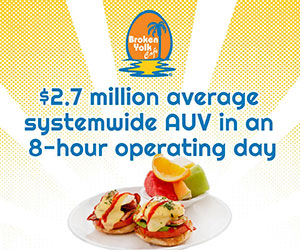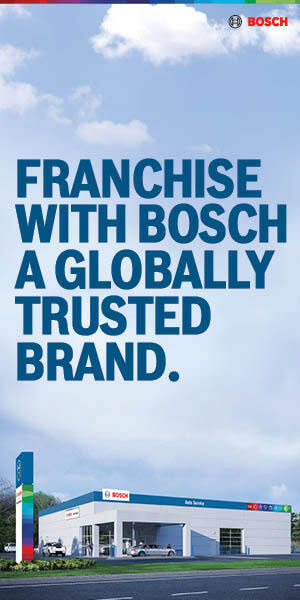The Domino's Theory: What Your Company Can Learn from the Customer-Driven "Pizza Turnaround"
When the pizza giant asked consumers to tell the truth, it ended up back at the proverbial drawing board. (Or should that be cutting board?) There's a lesson in this story for all of us--and here are some insights on the art of really listening to customers.
Recently, Domino's Pizza did something practically unheard of in the business world. First, it asked its customers for honest feedback. Second, it actually listened to the painful truth. (According to its documentary ad, "The Pizza Turnaround," unflattering words like "cardboard" and "totally void of flavor" were tossed about with abandon.) Finally--and here's the shocking part--the company reinvented its product "from the crust up."
Now, if you're the typical business leader, you might be protesting, "But we listen to our customers all the time!" Don't be too sure. You might think you're giving your customers what they want--but there's a good chance you're actually giving them what you want them to want.
Many companies are essentially saying to their customers, "You do need this product, right? Right?" They're starting with a product and trying to talk their customers into giving it their stamp of approval. What looks like soliciting feedback is really a bit of a dog-and-pony show.
I should know. I have spent my career helping some of the largest business-to-business companies in the world learn how to develop new "stuff" that customers want to buy. Through New Product Blueprinting (the process described in New Product Blueprinting: The Handbook for B2B Organic Growth), my company helps clients bring clarity to the "fuzzy front end" of product development.
So with the Domino's ad campaign making headlines for its boldly honest approach, you might be wondering how your company can follow its lead. Here are several tips:
- Ask your customers what they want--in a way that lets them know you really hear them. A lot of companies pay lip service to this idea. As consumers we've all had survey cards slapped down in front of us or fielded post-purchase telemarketing calls. Reconsider how you are collecting customer feedback. Are you doing it in a way that really engages the customer so you can get the truth? There's no substitute for respectful dialogue with customers. When you can get people truly engaged in the feedback process--I mean really focused on what they need and want from you--you'll get their honest opinions. And that raw honesty is what you need to serve them the right way.
- Don't rely on sales reps alone to capture customer needs. A salesperson is unlikely to uncover a full set of market needs if they are a) rewarded for near-term selling, b) unable to reach true decision-makers, or c) not calling on most of the customers in your target market segment. But put a good salesperson on a team with marketing and technical colleagues, train all in advanced interviewing methods, and you'll run circles around your competitors. Be wary of VOC (voice-of-the-customer) consultants who want to exclude your sales force from interviews because they can sell but not listen. In the long run, your company will fall behind competitors that have taken steps to develop a team of engaged and enlightened salespeople.
- Take action on what you're hearing. Many companies ask their customers for feedback with the best of intentions. But when they start hearing things they don't want to hear, they find a million reasons to explain it away. As a result, the feedback never gets translated into action. A lot of companies will say, "Oh, they're a difficult client," or, "That's not really what they want; it's just what they think they want." These companies don't really want to change what they're doing, don't trust the customer, or they don't trust themselves to understand what the customer wants. A good interviewer knows how to dig deep and figure out the customer's hidden needs. And a smart company will take action to meet those needs--no matter what.
- If you have to scrap your existing products and start from scratch, so be it. Here's the real truth: Most suppliers start with their solution, "validate" it by showing it to some customers, and measure market needs by watching sales results... after the product launch! In other words, they're getting it exactly backwards. Companies should invert this process: Begin with customer needs and end with supplier solutions. While doing things in the wrong order may "feel" better to you, it is far less likely to result in sales and customer satisfaction. Besides, intelligent customers can detect your "validation" a mile away. They correctly sense you are more interested in your idea than in them... and that doesn't do much for the long-term relationships you need to build.
- Get everyone in your company connected to the customer's reality. If you watched the Domino's ad, you could see how ego crushing it was for the company's employees to hear customers speak their minds about the flavorless crust and ketchupy sauce. Yet, you also could see how necessary it was for them to hear the harsh truth: it energized them to revamp their product and make it much, much better. People inside companies tend to get defensive about their products and processes. It's only human. But when you can cut through that defensiveness and show them--"Hey, this really isn't working for our customers"--well, that's where true service and value finally begin.
If you're thinking this is a message that recession-strapped companies need to hear, you're right. The quicker they get it, the more likely they are to survive. Figuring out what people really want from your company--and giving it to them--is the whole point of being in business. When money is flowing, you can stand some trial and error, some experimentation. When it's not, you'd better get it right now--and "right" means whatever the customer says it does.
Dan Adams, president of Advanced Industrial Marketing Inc., is passionate about B2B new product development. With more than 30 years working within and with major B2B corporations, he has explored every aspect of product development. His 2008 book, New Product Blueprinting: The Handbook for B2B Organic Growth, clarifies the "fuzzy front end" of innovation. His 2009 e-book, 12 New Rules of B2B Product Launch (26 pages) can be downloaded free (no registration required) at www.b2bproductlaunch.com/e-book). He is an award-winning speaker and conducts workshops worldwide. For more information, visit www.newproductblueprinting.com.
Share this Feature
Recommended Reading:
| ADVERTISE | SPONSORED CONTENT |
FRANCHISE TOPICS
- Multi-Unit Franchising
- Get Started in Franchising
- Franchise Growth
- Franchise Operations
- Open New Units
- Franchise Leadership
- Franchise Marketing
- Technology
- Franchise Law
- Franchise Awards
- Franchise Rankings
- Franchise Trends
- Franchise Development
- Featured Franchise Stories
| ADVERTISE | SPONSORED CONTENT |








 The franchise listed above are not related to or endorsed by Franchise Update or Franchise Update Media Group. We are not engaged in, supporting, or endorsing any specific franchise, business opportunity, company or individual. No statement in this site is to be construed as a recommendation. We encourage prospective franchise buyers to perform extensive due diligence when considering a franchise opportunity.
The franchise listed above are not related to or endorsed by Franchise Update or Franchise Update Media Group. We are not engaged in, supporting, or endorsing any specific franchise, business opportunity, company or individual. No statement in this site is to be construed as a recommendation. We encourage prospective franchise buyers to perform extensive due diligence when considering a franchise opportunity.